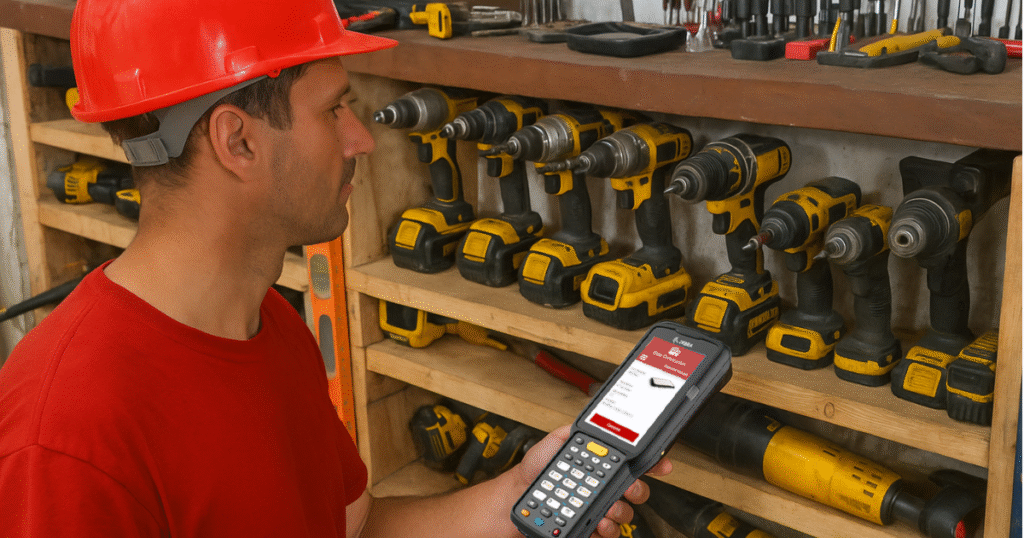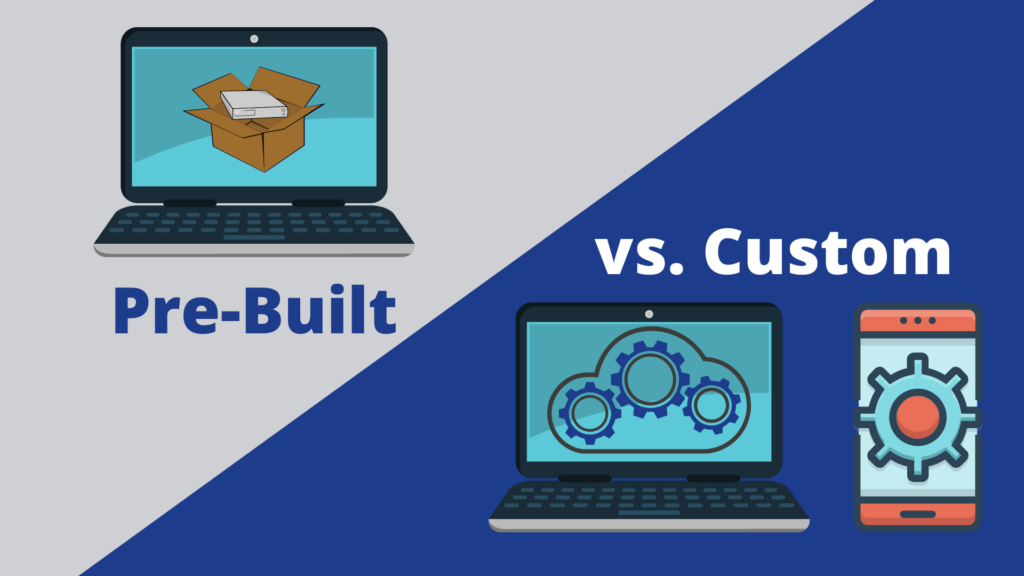How much did your construction company spend last year replacing “lost” or “missing” tools? Implementing construction tool tracking could potentially save a lot of money and prevent these losses.
Whether it’s cordless drills, specialized saws, or expensive power equipment, misplaced tools quietly erode profitability, delay projects, and frustrate your crews. For warehouse managers and construction executives alike, tool loss is more than a minor inconvenience—it’s an operational and financial drain.
Outdated tracking methods like handwritten sign-out sheets or memory-based guesswork simply can’t keep up with the speed and scale of today’s construction operations. Fortunately, there’s a smarter solution designed specifically for this challenge: smart scanning for construction tool tracking.
The Hidden Cost of Mismanaged Tools
Most construction companies accept some level of tool loss as “the cost of doing business.” But when you look closer, the impact is staggering.
- Replacement Costs: Replacing frequently lost hand tools, power tools, or specialty items adds up quickly.
- Downtime and Delays: If a needed tool isn’t available when the crew is ready to work, productivity stalls.
- Admin Overhead: Warehouse staff waste hours each week updating spreadsheets, chasing down tools, or mediating disputes.
- Morale Issues: Miscommunication and finger-pointing over lost tools can degrade trust between field teams and operations.
- Overbuying Tools: Companies often buy extra tools to compensate for not knowing where existing ones are.
Industry data suggests 10–15% of tools go missing annually in construction environments—leading to tens of thousands of dollars in losses for larger firms each year.
Why Traditional Methods Fail
Manual tracking systems are vulnerable to human error, inconsistent usage, and lack of visibility. Clipboard-based sign-out sheets are often incomplete, illegible, or ignored altogether. Even spreadsheets require manual entry and constant upkeep—systems that don’t scale when tools move between job sites daily.
What construction warehouse managers need is a streamlined, digital-first solution that enforces accountability and boosts visibility without slowing down workflows.
Smart Scanning for Construction: A Better Way to Track Tools
Smart scanning for construction warehouses offers a robust solution that bridges the gap between the field and the tool crib. It simplifies tool check-out/check-in processes, automates usage logs, and gives you clear visibility into tool allocation—without relying on GPS tracking or expensive hardware.
How It Works:
- Each tool gets a unique barcode or QR code—not just a sticker, but a scannable identity tied to real-time software records.
- Each employee is issued a scannable ID badge to check tools in and out.
- Scanners (handheld or mobile devices) update a central system in real time with every scan.
Every transaction is logged automatically, eliminating ambiguity and guesswork across your job sites.
Construction-Specific Use Cases
1. Frictionless Check-Out and Check-In
An employee needs a reciprocating saw. They scan their badge and the saw’s barcode—done. The system records who has it, when it left, and where it’s going. No paperwork. No bottlenecks. No confusion.
2. Track Usage, Not Just Location
This isn’t about GPS. It’s about knowing who’s using what, when, and for how long. Smart scanning lets you monitor tool assignments, usage frequency, and return history—helping identify misuse, high-demand tools, and maintenance needs before breakdowns occur.
3. Barcode Scanning for Construction Warehouses & Conex Boxes
With tools stored in Conex boxes, trailers, or site sheds, visibility is crucial. Smart scanning lets you:
- Scan the QR code on a container to see everything inside before opening it
- Quickly inventory mobile units before dispatch
- Reduce wasted time searching for tools between jobs
4. Employee Tool Responsibility at a Glance
Need to know what tools an employee has checked out? Scan their badge to instantly pull up a full list—ideal for end-of-day audits, resolving disputes, or tracking job site inventory across shifts.
Why Construction Firms Are Making the Switch
Smart scanning for construction tool tracking doesn’t just replace outdated systems—it transforms tool management from a liability into a competitive advantage.
Key Benefits:
- Reduced Replacement Costs: Fewer tools go missing when accountability is built in.
- Less Downtime: Tools are where they need to be, when they’re needed.
- Simplified Workflows: Check-outs and returns take seconds, not minutes.
- Real-Time Inventory Visibility: Know what’s on-site, in the crib, or in transit—at any time.
- Preventive Maintenance: Use data to plan servicing, extend lifespan, and reduce equipment failures.
- Improved Team Morale: Clear systems reduce friction, miscommunication, and finger-pointing.
Smart Scanning Is More Than Tech—It’s a Financial Strategy
At its core, barcode scanning for construction warehouses is a proactive way to protect your bottom line. It empowers warehouse managers to stay organized, while giving executives the insights needed to control costs, forecast purchases, and maximize tool ROI.
You’re not just adding a barcode—you’re building a data-driven system that reduces waste, eliminates friction, and brings visibility to a previously chaotic process.
Ready to Take Control of Your Tools?
If your crews are still tracking tools with clipboards or spreadsheets, you’re losing time, money, and control.
Smart scanning isn’t just an upgrade—it’s a shift toward efficient, accountable, and profitable construction operations.
Want to learn how smart scanning for construction can be customized to fit your job sites, warehouses, and tool cribs? Start your journey toward smarter tool management today.



